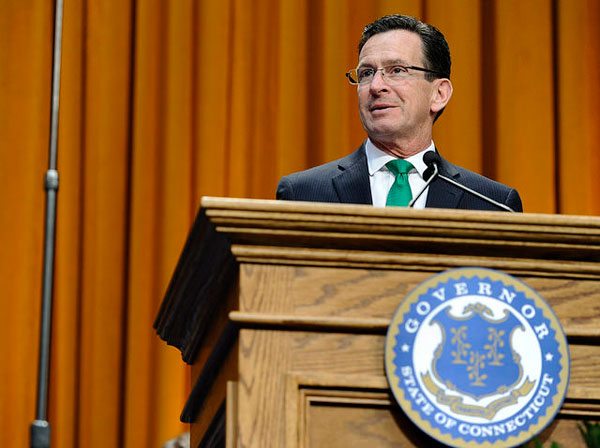
November 28, 2017, CT News Junkie
Christine Stuart, the editor of CT News Junkie, a popular blog about Connecticut’s politics and public policy, reports on how community-based nonprofits are adjusting to recent state budget cuts, following years of underfunding.
They rallied, they got arrested for refusing to leave the governor’s office during the height of the budget debate, but in the end they were handed some ugly budget cuts that have their organizations rethinking how they operate.
And just when they thought it couldn’t get any worse, it did.
Funding for private nonprofit human service organizations was cut again last week when Gov. Dannel P. Malloy’s administration announced it would be holding back about $181.6 million in what’s termed a “lapse.” A “lapse” is an identified amount of money that policymakers believe will be underspent across some portion of the budget.
NPQ has followed the Connecticut budget crisis and its impact on nonprofits, most recently here, here, and here. The governor is now required by law to prepare a deficit-mitigation plan for the projected shortfall in the first year of the biennium $41.3-billion budget. Federal Medicaid reimbursements and income and sales tax receipts represent large parts of this fiscal year’s revenue shortfall.
Stuart interviews Gian-Carl Casa, president and CEO of CT Community Nonprofit Alliance, who expressed concern about the consequent “availability of and lengthened waiting lists for services.” The Arc Connecticut reports current cuts to their Behavioral Services Program and other essential community supports, and worries about what is yet to come, a subject previously reported on by NPQ.
Sign up for our free newsletters
Subscribe to NPQ's newsletters to have our top stories delivered directly to your inbox.
By signing up, you agree to our privacy policy and terms of use, and to receive messages from NPQ and our partners.
“We know that people with [intellectual and developmental disabilities—I/DD] and their families are tired after this year’s endless budget battles and we are all looking forward to the holiday season, nevertheless we must take action,” an email from The ARC Connecticut states. “If the Governor is required to submit a deficit mitigation plan, then based upon past experience we should all expect that plan will include cuts to community supports for people with I/DD.”
Last July, NPQ reported that that the Hartford Foundation for Public Giving planned to offer $1 million to help nonprofit organizations adjust to Connecticut state budget cuts. In her update, Stuart notes the results of a survey recently conducted by the Connecticut Council for Philanthropy, indicating that 33 percent of the state’s grantmakers “are supporting conversations about nonprofit mergers, but many more report that they plan to respond in some way to the state’s fiscal crisis. About 50 percent are planning to increase their grant support to nonprofits.”
In 2014, Office of Policy and Management Secretary Ben Barnes declared that Connecticut had “entered into a period of permanent fiscal crisis.” Connecticut’s multitude of fiscal challenges that were decades in the making continues. Shrinking revenues and rising fixed costs should come as a surprise to no one, especially the nonprofit community.
Oliver Wyman, SeaChange Capital Partners, and GuideStar recently produced an instructive report on “The Financial Health of Philadelphia-Area Nonprofits” that serves as a warning to and scenario planning for nonprofits in Connecticut and elsewhere. For a myriad of reasons similar to what nonprofits are facing in Connecticut, this report finds that a significant number of Greater Philadelphia nonprofits are struggling financially and that few have financial risk management processes in place.
Nonprofits in the Philadelphia five county area are fragile: roughly seven percent are technically insolvent (i.e., liabilities exceed assets); over 20 percent have less than one month of cash reserves (i.e., virtually no margin for error); and over 40 percent have net operating margins of zero or less. In aggregate, we believe that fewer than 40 percent of nonprofits can be characterized as financially strong. Yet our experience in other geographies suggests that many executives and governing boards don’t fully understand the financial condition of their organizations or how they compare to peers.
This critical report discusses fiduciary steps that organizations can take to manage their financial health, especially for those exposed to reductions in government funding. It’s not the first time NPQ has shared such reports by these leaders in the area of risk management. As Connecticut’s nonprofits and grantmakers try to come to terms with the state’s enduring budget crisis, it is hoped that together they can achieve new sustainable funding models that are more flexible, less restrictive, and that produce an annual surplus necessary to manage financial risks.—Jim Schaffer











